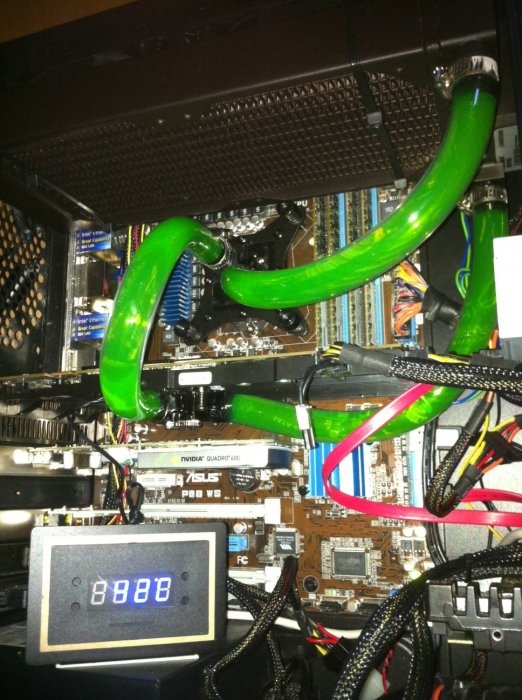Nice atyp. My experience with the C2070 is that it just locks up when it gets too warm. I managed to do that a few times when I was setting the OC settings.

I have never managed to control the fan speeds on the 2 systems I have with CPU watercooled. My systems are push/pull fans on the radiators but they are not noisy ... there is some noticeable fan noise but it is more of a whisper and everything is in dedicated office space. I had considered fan speed control just to reduce dirt accumulation in the radiators, but the radiators are much easier to blow out than the air cooled heatsinks for CPUs. And, I put mesh filters on the fans so dirt accumulation is pretty minimal anyway. This all caused me to lose interest in any sort of fan speed control.
I used a pyrometer all over my systems during setup. With high water flow the temp is quite uniform. Some argue that more heat is removed if the water flow is slow as it is moved thru the radiator ... good argument. But the water is also slow thru the water block & absorbs more heat.
I decided not to mess with any more gadgets & controllers & just let it pump. My CPU OCs are about as good as they get & they can run for days 100% maxxed. Running from 4.2 GHz to 4.5 GHz so another 100 to 200 MHz is not interesting.
And, the OC for the C2070 ... the GPU is set to the maximum setting of the software I am using. I think it is the memory clock that had to be backed down a bit for stability. I also do not think the issue is temperature related although if some sort of peltier device was used higher clocks might be had .... ehhh!

I made a thread on that someplace in this forum.

